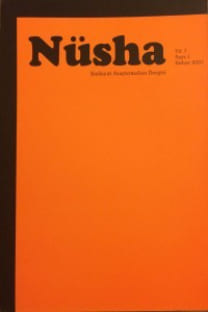Amerika birleşik devletlerinde Arapça öğretimi
Teaching Arabic in the united states
___
- Abboud, Peter, Ernest Abdel-Massih, Salih Altoma, Wallace Erwin, Ernest McCarus and Raji Rammuny. (1971). Modern Standard Arabic Intermediate Level, Three parts. Ann Arbor, MI: Department of Near Eastern Studies.
- Abboud, P. F. & McCarus, E., (Eds.). (1968, 1983). Elementary Modern Standard Arabic. Two volumes. Cambridge, UK: Cambridge University Press.
- Allen, R. (1992). Teaching Arabic in the United States. In A. Rouchdy (Ed.), The Arabic Language in America (pp. 222-250). Detroit: Wayne State University Press.
- Badawi, E. M. (1985). Educated spoken Arabic: A problem in teaching Arabic as a foreign language. In K. R. Jankowsky (Ed.), Scientific and Humanistic Dimensions of Language (pp. 15- 22). Washington, DC:Georgetown University Press.
- Bernhardt, E. B. (1998). Sociohistorical perspectives on language teaching in the modern United States. In Byrnes, H. (Ed.), Learning Foreign and Second Languages: Perspectives in Research and Scholarship. (pp. 39-57). New York: Modern Language Association.
- Brustad, K., Al-Batal, M.,& Al-Tonsi, A. (1995). Alif-Baa: Introduction to Arabic Letters and Sounds. Washington, DC: Georgetown University Press.
- Brustad, K, (1996). Al-Kitaab fii taallum al-arabiyya. Washington, DC: Georgetown University Press.
- Byrnes, Heidi. (2002). Toward academic-level foreign language abilities: Reconsidering foundational assumptions, expanding pedagogical options. In Leaver, B. and Shekhtman, B. (Eds.), Developing Professional-Level Language Proficiency (pp. 34- 58). Cambridge, UK: Cambridge University Press.
- Coleman, Algernon and Robert Herndon Fife. 1949. An Analytical Bibliography of Modern Language Teaching, 1937-1942. New York: King's Crown. (Editörün Notu: Bernhardt, Coleman Raporuna yaptığı referanslar için sadece Coleman ve Fifeyi zikreder.)
- Cowell, Mark W. 1964, reprint 2005. A Reference Grammar of Syrian Arabic. Washington, DC: Georgetown University Press.
- Erwin, Wallace. 1969, reprint 2004. A Basic Course in Iraqi Arabic. Washington, DC: Georgetown University Press.
- Gee, James P. 1998. "What is Literacy?" In Negotiating Academic Literacies: Teaching and Learning across Languages and Cultures, Vivian Zamel and Ruth Spack (Eds.). Mahwah, NJ: Lawrence Erlbaum, 51-59.
- Harrell, Richard S. 1962, reprint 2004. A Short Reference Grammar of Moroccan Arabic. Washington, DC: Georgetown University Press.
- Hary, B. (1989). Middle Arabic: Proposals for new terminology. Al- Arabiyya 22,19-36.
- Hary, B. (1996). The importance of the language continuum in Arabic multiglossia. In Elgibali, A. (Ed.), Understanding Arabic: Essays in Contemporary Linguistics in Honor of El-Said Badawi (pp. 69-90). Cairo: The American University in Cairo Press.
- Language Continuum. (2004). George P. Schultz National Foreign Affairs Center, School of Language Studies, Foreign Service Institute, U.S. Department of State. .
- McCarus, E. (1992). History of Arabic study in the United States. In Rouchdy, A. (Ed.), The Arabic Language in America (pp. 207- 221). Detroit: Wayne State University Press.
- Pratt, M. L. (2003). Building a new public idea about language. Profession 2003. New York: Modern Language Association.
- Ryding, K. (1991). Proficiency despite diglossia: A new approach for Arabic. Modern Language Journal 75: 2, 212-218.
- Ryding, Karin C. 2005. "A response to Mary Louise Pratt's 'Building a new public idea about language. ' "ADFL Bulletin 36:2:14-16.
- Ryding, Karin C.(1995). Discourse competence in TAFL: Skill levels and choice of language variety in the Arabic classroom. In Al Batal, M. (Ed.), The Teaching of Arabic as a Foreign Language. (pp. 223-231). Provo, UT: American Association of Teachers of Arabic.
- Welles, E. B. (2004). "Foreign language enrollments in United States institutions of higher education, fall, 2002" in ADFL Bulletin 35, 2-3: 7-26.
- ISSN: 1303-0752
- Yayın Aralığı: 2
- Başlangıç: 2001
- Yayıncı: Oku A.Ş.
Arapçada cer harflerinin (edatların) birbirinin yerine kullanımı olgusu
Bedî ilminin belâgat bilimleri arasındaki yeri
Esa al-na ouri s efforts in highlighting alkhayyam
Hikâye yazarlığı yönüyle ali et-tantâvî
Bânet su âd kasîdesine yapılan çalışmaların tesbiti üzerine-I
Bohem şair xu zhimo'nun kısa yaşamı ve eserleri
Arapça şart cümlelerinde zaman
